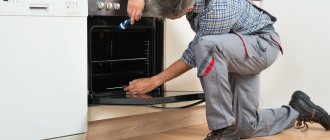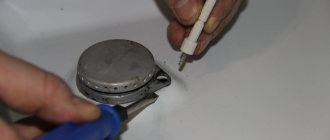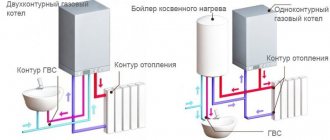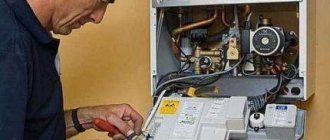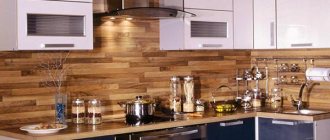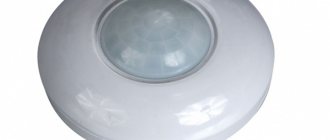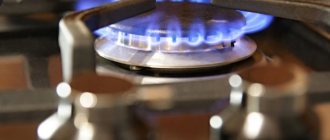What's great about modern electric ovens is their variety of functions. Even the simplest models have at least 5-6 heating modes. And there’s no need to talk about premium devices. In addition to cooking, they can perform several other tasks. For example, defrosting food, warming plates, or speeding up the rise of dough. Having such an oven, you don’t even need to go to a restaurant. You will have access to almost any culinary technique - from perfectly roasting meat to cooking in a vacuum using sous-vide technology. Of course, such equipment is not cheap, but if you love and know how to cook, you will not regret the purchase.
But today we’ll talk about a fairly simple function that has managed to advance the cooking process in a household oven to a new level. We are talking about convection, which is now present in most electric models and in some gas appliances. But, despite this, many housewives are not at all familiar with the principle of its use and advantages, so they do not understand why convection is needed in the oven.
Convection is the forced movement of heated air flows throughout the entire volume of the oven's working chamber. After reading the article, you will learn how this mode works in electric and gas ovens, its effect on the cooking process, as well as the rules of use.
Application
Expert opinion Ekaterina Anatolyevna Smirnova has been involved in interior design for 7 years, a professional architect.
Convection in the oven opens up great opportunities for culinary experiments and greatly simplifies the process of preparing complex dishes. Here are some examples of using a convector:
- conventional convection without heating or at low temperatures is suitable for warming plates, preparing (rising) dough before baking, drying berries, herbs, crackers, zest or fruit slices (50-60 ℃), and also for defrosting food;
- wet convection. Used for preparing steamed dishes (fish, vegetables), baking from butter dough and for sterilizing jars;
- convector and bottom heater. The mode is suitable for cooking pizza, bread and open pies;
- convector and upper heater. Used in cooking casseroles, meat, vegetable soufflés;
- turbo grill (convector + grill + top heater). It is used for baking large dishes of complex shape (whole birds, piglets, etc.) Rotating, the air masses create a skewer effect, and the dish is evenly covered with a crust over the entire surface.
Of course, convection in the oven increases the cost of equipment, but this function greatly simplifies and speeds up the cooking process and allows you to create real culinary masterpieces. Cook with pleasure and delight your loved ones with new and interesting recipes!
Video from YouTube on the topic of the article:
She graduated from the author's physics and mathematics lyceum and art school. Received a higher education in economics with a major in innovative management. Freelancer. Married, actively travels. He is interested in Buddhist philosophy, enjoys transurfing and loves Mediterranean cuisine.
Found a mistake? Select the text with the mouse and click:
Fresh lemon is not only suitable for tea: clean dirt from the surface of an acrylic bath by rubbing with half a cut citrus, or quickly wash the microwave by placing a container of water and lemon slices in it for 8-10 minutes at maximum power. The softened dirt can simply be wiped off with a sponge.
Threads made of gold and silver, which were used to embroider clothes in the old days, are called gimp. To obtain them, the metal wire was pulled for a long time with pliers to the required fineness. This is where the expression “to drag out the rigmarole” came from - “to do long, monotonous work” or “to delay the completion of a task.”
If your favorite things show the first signs of gestation in the form of untidy pellets, you can get rid of them using a special machine - a shaver. It quickly and effectively shaves off clumps of fabric fibers and returns things to their proper appearance.
There are special traps to combat moths. The sticky layer with which they are covered contains female pheromones that attract males. By sticking to the trap, they are eliminated from the reproduction process, which leads to a decrease in the moth population.
The dishwasher cleans more than just plates and cups. You can load it with plastic toys, glass lamp shades and even dirty vegetables, such as potatoes, but only without using detergents.
The easiest way to remove scale and carbon deposits from the soleplate of the iron is with table salt. Pour a thick layer of salt onto the paper, heat the iron to maximum and run the iron over the salt bed several times, applying light pressure.
Before removing various stains from clothing, you need to find out how safe the selected solvent is for the fabric itself. It is applied in a small amount to an inconspicuous area of the item from the inside out for 5-10 minutes. If the material retains its structure and color, you can move on to stains.
Stretch ceilings made of PVC film can withstand from 70 to 120 liters of water per 1 m2 of their area (depending on the size of the ceiling, the degree of its tension and the quality of the film). So you don’t have to worry about leaks from neighbors above.
The habit of using an automatic washing machine “sparingly” can lead to the appearance of an unpleasant odor in it. Washing at temperatures below 60℃ and short rinses allow fungi and bacteria from dirty clothes to remain on internal surfaces and actively multiply.
Micro-ventilation of windows
Now let's return to PVC windows. The standard glass thickness is only 70 mm. In addition, the plastic window is absolutely sealed. All this creates the prerequisites for natural moisture, which is present in every room, to settle on the glass. The easiest way to bring the humidity level back to normal and remove condensation from the surface of the glass is regular ventilation. Modern PVC windows are equipped with a very convenient function called “ventilation mode”. Simply turn the handle to the desired position, the window sash moves back a little and a ventilation hole opens, allowing you to ventilate the room and remove excess moisture from it with minimal heat loss.
If periodic ventilation turns out to be ineffective, most likely the cause of window fogging is the increased level of humidity in the room. In this case, condensation can settle not only on the windows, but also on the walls and household items. There is no need to say that a humid environment is ideal conditions for the proliferation of harmful bacteria, microorganisms and fungi, which can cause serious and sometimes irreparable damage to the health of household members. Sometimes people live for years in problem apartments and realize this only after installing plastic windows, which, like a litmus test, can show that not everything is in order with the microclimate in the room.
What is convection in the oven for?
https://youtube.com/watch?v=tIml4CdHIwA
It allows you to successfully bake large pieces of meat, bake wonderful pies, make delicate meringues and even simply dry herbs, delicious candied fruits or crackers. You can even skip the heat by using just cold convection. And in combination with low heat, convection will allow you to quickly defrost meat or vegetables from the freezer.
The convection mode will allow you to use the entire volume of the oven with maximum efficiency: even if you put two or three baking sheets inside, everything will bake evenly.
- It is not necessary to use this function every time you cook. It can be turned on in cases where it is really necessary:
- to ensure a crispy crust;
- to dry out too much liquid released from baked products;
- for good baking of a large pie or poultry carcass.
The modern convection oven has various baking, grilling and defrosting modes. This allows you to cook several dishes at the same time, which significantly reduces gas (electricity) consumption and the amount of cooking time.
Detailed instructions from the manufacturer tell you how to configure the necessary parameters. So, convection is a function in which forced air circulation occurs inside the oven, due to which the same heating temperature is formed on all sides.
- To understand whether convection is needed in the oven, let’s look at the advantages of this function:
- Uniform temperature. Dishes are baked on all sides at once.
- Cooking several dishes at the same time.
- Replaces hobs. In some cases, such an oven allows you not to use standard hobs (in the country, in country houses, etc.).
- Minimizing electricity and gas consumption.
- Additional modes - for baking, defrosting, drying.
- Full control and security. You can always turn off the blowing function yourself.
Advantages
Many people ask why the convection mode is needed if meat is baked perfectly in the oven without it? Why turn it on and what dishes to cook with it? This question was partially answered in the previous section.
- A convection oven has a number of advantages:
- the dish is baked evenly;
- you can cook food on several baking sheets at once;
- you can do without a hob;
- less electricity or gas consumption;
- less oil consumption;
- The range of dishes that you can cook in the oven is expanding.
In the oven, meat and fish are defrosted with a stream of hot air, medicinal and spicy herbs are dried, nuts and lemon zest are dried. The oven makes excellent meringues and various pastries made from dough. If convection is not needed, then the mode is simply not turned on.
Indeed, how many times have housewives been faced with a situation where it is necessary to cook both a side dish and meat at the same time? And when you have to bake a cake from several layers? In the latter case, cooking was delayed for several hours: first the first cake was placed, when it was baked - the second, then the third, and so on.
It was only a dream to cook several cakes at the same time on different levels. In a convection oven, you can spread the dough on several baking sheets, and it will bake equally well on all of them.
Why else should you choose a device with convection? Not everyone knows that convection can be used to dry berries and herbs. How did you usually dry it in ovens before? We laid out the food on a baking sheet, turned on the minimum heat, and opened the door.
To prevent the berries from burning, you had to stir them regularly and monitor the temperature. If you use convection in the oven, everything becomes much simpler. The fan blows the greens and berries evenly, as a result they dry quickly and do not burn.
In this case, the upper and lower heaters do not need to be turned on at all - the convector is often adjacent to an additional low-power circular heating element, which is turned on together with the fan.
In ovens, convection is often combined with other heating methods. The more expensive the model, the more functions it has, the more combinations for preparing a variety of dishes it can have.
What is convection in an oven
Convection is the transfer of heat by air currents. It is a Latin word that means "transfer." In simple terms, convection is when warm and cold air change places, the warm air rises and the cold air sinks.
Eventually, all layers mix and the temperature becomes the same everywhere. Perhaps someone remembers old ovens, in which the baking sheet had to be placed on the lower level first, and then raised higher so that the food did not burn from below.
So, in convection ovens there is no need to perform such manipulations. The heat will be evenly distributed immediately after heating, and the delicious pies will not burn. They will be cooked through in the middle and crispy on top, without being soggy or overcooked.
Moreover, you can put two or three baking sheets in one oven at the same time and even cook several dishes at once. Truly, this is the dream of every housewife. You save time, energy and have time to get everything done.
In older oven models, burners (gas) or heating elements (electric) were located only at the bottom, and the top of the baked goods was browned due to natural convection - the movement of heated air and heat exchange in the closed space of the oven.
The results were often disappointing: the bottom was burnt and the food was unevenly baked. I had to take out the baking sheets, turn them in different directions, and place a container of water on the bottom of the oven.
New oven models, as a rule, are also equipped with heating from above, which greatly simplifies the baking process and allows you to cook dishes on the grill. But even with combined heating (bottom and top), natural convection may not be enough for perfect baking.
The fact is that normal heat exchange in the oven occurs rather slowly; certain factors can interfere with it: a door that does not close tightly or opens it frequently, as well as large baking sheets that occupy the entire width of the oven and interfere with air circulation.
Convection (from Latin convectio - transfer) is a natural heat exchange in which internal energy is transferred by flows and jets. Warming air rises and cold air falls down.
In an oven, when layers of air are mixed more quickly due to convection, the temperature immediately becomes the same on all levels. Now any housewife can appreciate the advantages of ovens with forced convection, that is, air circulation created using a built-in fan.
It is usually located on the back wall of the oven and turns on separately when certain modes or preset programs are selected.
Various oven manufacturers offer improved convector designs that have additional features: fans with a separate heating circuit, reinforced fans to create a rapid flow of hot air, moist convection mode for steaming dishes without the use of fats.
What is forced convection
In this case, this means forced air circulation in the oven. The movement of hot air masses is provided by a fan.
In the closed space of the oven, the airflow creates a real vortex of hot air. This vortex evenly heats the product from all sides. Nothing else burns on the bottom; the top is covered with a beautiful crispy crust.
The fan is usually located on the back wall of the oven and is turned on separately.
Convector in this case means forced air circulation mode in the oven. The movement of hot air is provided by the ventilation element. In the closed space of the oven there is a real hot air blowing system.
- Convective heating while a dish is being cooked in the oven heats it up equally on all sides, therefore:
- nothing burns from the bottom;
- a magnificent fried crust forms on top;
- the dish will be completely cooked.
The forced convection system is usually located on the back wall of the oven. The fan can be turned on separately and prepare properly delicious baked dishes. After the end of cooking, the timer usually beeps, giving a signal.
What does convection do and how does it work in ovens of different types of stoves?
Ovens can operate on various fuels. We suggest you figure out what convection does in an oven and why it is needed. Let's consider the main types of household appliances that are in demand among consumers.
Functionality has been significantly expanded
What is convection used for and how does it work in a gas oven?
In gas models, the burner is located at the bottom of the cabinet. This greatly complicates the uniform heating of the internal space and, as a result, the process of preparing various dishes. Why is convection needed in a gas-powered oven? For even distribution of hot air. When starting to prepare a dish, first turn on the oven, wait a while for it to warm up to the optimal level, and then place the future dish inside.
The disadvantages of a gas built-in oven with convection include the lack of complete tightness, since there is a need for timely removal of combustion products. As a result, the time required to prepare a particular dish increases. In addition, a gas stove with a convection gas oven will cost more than an analogue that does not have a similar function.
Gas models with advanced functionality are in demand
Why is convection needed and how does it work in an electric stove oven?
When choosing new household appliances for the kitchen, every housewife thinks about whether convection is needed in an electric oven? Models with convection mode are in demand today. Modern electric ovens have four heating elements located around the entire perimeter of the device. Despite this, the manufacturer does not guarantee uniform baking of the prepared dish due to the low rate of natural air exchange. Different densities and sizes of the food being prepared have a significant impact on the heating rate.
What is convection in an electric stove oven? This is a special element included in the cabinet, which ensures forced movement of hot air inside the device. As a result, food is cooked much faster, while ensuring uniform baking throughout the entire volume. Depending on the design, three convection mode options can be implemented in electric ovens:
- a special fan, the characteristics of which allow the movement of hot air through the internal space. Installing powerful fans on certain models will significantly speed up the cooking process;
- convector installed near the additional heating circuit. Some electric ovens have two convectors;
- humid, allowing you to saturate the internal space with hot steam.
Features of convection mode in an oven with grill
If you decide to buy an electric tabletop mini-oven with convection, you should pay attention to a model with a grill function. This is the best option for meat lovers
A model with forced air exchange and grill will help you cook a whole chicken or shish kebab with a golden-brown, crispy crust in less time.
A fragrant golden brown crust is guaranteed
How does convection mode work in a microwave oven?
Convection is a process that allows warm air to be evenly distributed throughout the chamber. In terms of functionality, such microwave ovens are comparable to conventional ovens. They are large in size and consume a lot of electricity.
Microwave is a good alternative to a conventional oven
Results
When you are going to purchase this or that model, say Hans, check out the assortments and reputation of stores from your or the nearest city. Study reviews of both the store and the model. If there are few critical reviews of a model, it may be that people simply did not purchase the best product or were using it incorrectly. Here is a question for the retail outlet. Give preference to both the store and the product with the most positive reviews. Of course, visit several stores and check the stove in person.
How to use the option?
Detailed instructions for using the oven are included with each electric stove, but there are several rules that experts in household kitchen appliances recommend taking into account:
- The option does not require preheating the oven. Advance heating to a certain temperature may be required when preparing dishes that require this, for example, meringues, bread, soufflé.
- Using a convector means that baking and baking occurs at higher temperatures. Therefore, when setting the mode, you should make an adjustment of 20-25 degrees downward.
- When dishes occupy the entire usable area of the oven, the cooking time increases when the convector is turned on. This is due to the fact that there is no space for free air circulation.
- Different foods take different times to cook. Be sure to monitor this and remove the baking sheets before the dish burns.
- The convector allows you to cook frozen foods without defrosting. The main thing is to initially preheat the oven for 20-40 minutes.
If you follow these simple rules, using the option will be a pleasure.
How the convection mode is used in practice
In practice, the convector allows you to achieve amazing results. Thick pieces of meat and fish are baked with high quality and get an even crispy crust on all sides. The dish turns out moderately juicy. This mode significantly simplifies the process of preparing complex dishes, while saving energy consumption (gas or electricity).
Application examples.
- Activating the function without heating or with slight heating allows you to quickly defrost food. In this mode, berries, fruits cut into pieces, herbs and zest are dried. You can also place the dough on a baking sheet before baking.
- In convection mode with a bottom heater, pies, pizza and other baked goods are baked.
- The function in combination with the top heater is suitable for preparing casseroles, meat dishes and vegetable and fruit soufflés.
- Multifunctional heating mode with forced circulation is suitable for simultaneous baking of pies on several levels at a temperature of 170-190° or confectionery products (from 180°). You can bake large pieces of meat or fish on several levels (from 200°).
- The turbo grill mode is used for roasting whole poultry, pig, and leg of lamb.
- A steam convector is used when preparing steamed vegetable, meat and fish dishes, and baking buns from butter dough. Can be used to sterilize dishes.
So we figured out what convection is. When using this function in an electric oven, it becomes possible to expand the list of prepared dishes and improve the quality of baking. Nothing will burn and everything will bake evenly!
Additional characters
The grill function is useful, but, of course, not the only one in modern oven models. Each plate has its own set of options.
Let's look at the most common designations of various modes:
- Light bulb: oven light.
- Snowflake: defrosting food.
- Two stripes at the top and bottom of the frame: standard mode, when heat is supplied evenly from above and below. To bring the dish to readiness, you can use the “heat from above” or “heat from below” option (on the panel they are indicated by stripes at the top or bottom of the square).
- Fan: convection or blowing hot air into the chamber. Can be shown with standard or grill modes.
- Double-sided horizontal arrow with a pair of arms: skewer.
Different types of plates and mode features
Every housewife has experience working with an electric or gas oven, an oven, or a microwave.
This is a basic set of kitchen utensils
If equipment differs in types and technical parameters, then how do the characteristics of convection heating differ?
Electric oven and convection
Modern furnaces with a built-in thermostat are divided into 2 groups: electric and gas. Both have camera lighting. But in the oven of an electric stove, unlike a gas stove, the heating elements are located below and above.
Note. Innovative models are often released with expanded functionality. The new generation oven has built-in working elements – a spit and a grill. With them, the meat receives uniform roasting, softness and juiciness, and a crispy golden crust.
Gas stove and convection
Previously, only electric ovens could boast a convection mode. But today, a gas-powered stove also has a convection mode. She has introduced a development whose employees are not going to stop there.
Only here the heaters are located on the side. Typically, 2 heating elements are placed at the same level on the right and left walls. But there is an option for one burner connected to the side panel for high-quality heating of the chamber.
Since most homes have a gas pipeline, about 80% of Russian women buy gas stoves. This means that until recently they could not take advantage of the convection mode.
To the point! Oven with catalytic cleaning: pros and cons
Microwave
Owners of ventilated microwave ovens can learn what convection is and appreciate how it works. Owners of such “helpers”, in addition to the direct purpose of the microwave (heating and defrosting food), use them for baking biscuits, pies, baking fish and meat!
In the absence of a full-fledged oven, they replace it without compromising the quality and result of the prepared food.
The mechanism is standard: on the back wall of the oven there is a fan that pumps air inside the working chamber. But the models are larger in size compared to conventional microwaves, require additional space for placement, consume more electricity, and are more expensive.
The ideal microwave oven combines 3 functions:
- microwave;
- grill;
- convection.
Heaters are PETN or quartz spirals mounted inside the working chamber on the top wall. The second option is better - quartz heaters are ergonomic, take up little space, you can easily clean it and adjust the degree of heating.
Learn more about cleaning the inside of your microwave oven
Oven
To answer the question whether convection is needed in the oven or not, you need to understand the purpose of the purchase (what dishes you are going to cook, how often). For women who don't have a good relationship with a conventional oven, a modernized option is necessary to get tasty food, not tough, shoe-like meat.
The oven combines the concepts of free and forced convection. In the first case, the movement of air masses is spontaneous, occurring due to the heterogeneous density of the medium, provoked by the action of external forces. Natural heat exchange is a long process and does not cancel the fact of moving the baking sheets, so “forced” heat exchange intervened.
The duration of natural air distribution is affected by a loosely closed door, the frequency of opening the oven to control the cooking process, and massive large-sized baking sheets that take up a lot of space and interfere with the free circulation of air masses.
Now almost all manufacturers strive to equip their products with heating elements and a fan
The built-in convector, circulating air, is turned on separately when selecting programs; The entire volume of the oven is used. Manufacturers optimize the mechanisms of convectors, offering the ability to create a fast-flowing air stream through reinforced fans, the presence of a separate heating circuit, and a wet cooking mode to produce steamed dishes cooked without oil.
Note to housewives! 12 traditional ways to clean the oven
So why do plastic windows actually sweat? Let's figure it out
To begin with, we list the “symptoms that will help make the correct “diagnosis” of a foggy plastic window:
- double-glazed windows are dry during the day, but condense only in the morning and evening;
- windows sweat only in the cold season or when the temperature drops sharply;
- in the house only one window is covered with condensation, while all the others are in a normal “dry” state;
- glasses always sweat: at any time of the year or day (an extremely rare case)
Sandwich panels for window slopes
A short excursion into bygone times will help us clarify the picture. Let's remember how old wooden windows were designed, which almost never sweated. They were double. Between the outer and inner windows there was a fairly decent air cushion, which “smoothed out” the difference between the external and internal temperatures.
The age-old debate is which windows are better: wooden or plastic?
In addition, outdated windows could not boast of excellent airtightness. And any, even the smallest, cracks are a kind of “bridges” through which excess moisture is removed from the room.
Why do you need convection in an oven, or Features of the function for different types of stoves
What is convection in an electric stove oven
Some housewives ask a very reasonable question about how much convection is needed in an electric oven, which is considered the most powerful of all types and can heat up to a temperature of 300°C. In fact, the use of a convector is necessary to obtain an even distribution of warm air. Despite the presence of several heating elements and high power, it is not always possible to achieve complete baking without burning. The reasons for this may be:
- slow speed of natural convection;
- baking pan thickness;
- different density of food products.
In order for the finished dish to be fried and the baked goods to have a golden crust, you cannot do without a convector. Therefore, models of electric stoves with this option are the most popular on the market.
IMPORTANT! (click to find out)
What is convection in a gas stove
Gas stoves with convection ovens have their admirers, which is primarily due to the relative cheapness of this type of fuel. Modern stoves that run on gas and are equipped with a convector are no different in appearance from their conventional “brothers”. The only difference is the presence of a fan built into the rear wall.
The convector used in a gas stove has its own operating characteristics. Since in such models the heating part is located only at the bottom, to obtain the required temperature you need to run the convector for a while and only then load the dish into the oven. A significant disadvantage of gas models is the lack of complete sealing of the oven, since the constant removal of combustion products is required. This leads to an increase in cooking time, creating additional problems for the housewife.
Convection grill - what is it?
Modern stoves are often equipped with additional options, such as a grill function. Its presence allows you to cook a piece of meat on a spit, as if plunging into the depths of centuries, when ancestors cooked their food over a fire. There are two types of grill:
- gas, which creates the full feeling of cooking over coals;
- electric, characterized by more convenient operation.
The presence of a grill does not mean the absence of convection. On the contrary, these two modes complement each other perfectly. If there is a convector in the stove, there are two grill modes:
- air fryer;
- turbo grill.
The corresponding mode is activated by pressing the desired button on the control panel. A special feature of using an air fryer is the ability to obtain juicy meat with a crispy crust due to the uniform heating of the entire surface of the dish.
A turbo grill is required when there is a need not only to completely bake a piece, but also to do it quickly. Its main task is to activate all heating elements present in the stove and all fans.
FOR YOUR INFORMATION!
(click to find out)
What is convection in a microwave oven
The microwave has become familiar to every family, since this household appliance allows you to quickly heat small portions of food or defrost food. At its core, a convector installed in a microwave oven is no different from a similar device in a standard oven, except in size. A small fan leads to the distribution of air flows inside the chamber. When certain temperature parameters are reached, automatic shutdown occurs. Using a convection microwave allows you to reduce the cooking time by about half.
FOR YOUR INFORMATION!
(click to find out)
Defects during installation
If there are many plastic windows in the house, but only one fogs up, the reason is most likely a defect in manufacturing or installation. But it should be remembered that such cases are extremely rare. Therefore, before making claims to the manufacturing company or installation specialists, it is necessary to exclude the possibility of other causes of window fogging.
If moisture accumulates inside the glass chambers, this is clearly a manufacturing defect or a violation of the window seal due to improper installation. In this case, the manufacturer or provider of window installation services is obliged to dismantle the defective double-glazed windows and install new ones at its own expense. But such situations are extremely rare. Low-quality products can cause irreparable damage to the company's authority, which is completely unacceptable in the conditions of fierce competition in the modern window market, when each company, in order to stay afloat, must be very responsible about its image.
Read how to choose the right plastic windows.
